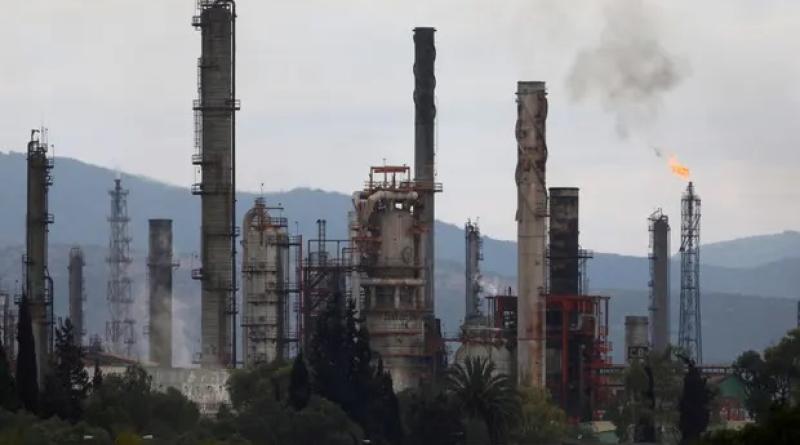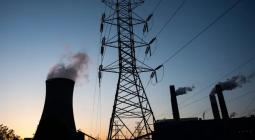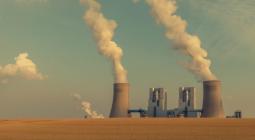Woodside has huge plans to drill for oil and gas – and to meet its climate targets. How does it do it?

The Australian energy giant Woodside is spending $7bn to drill for 479m barrels-worth of oil and gas off the coast of Mexico, but it says this is all in line with keeping global heating to 1.5C.
How?
Woodside has said it “aims to thrive through the energy transition by building a low-cost, lower-carbon, profitable, resilient and diversified portfolio”.
It has a 60% stake in the development, known as Trion, alongside Mexico’s state-owned oil exploration and production company, Pemex.
Pemex discovered the oil and gas 2.5km deep, about 180km off shore in the Gulf of Mexico. There will be 24 wells and Pemex and Woodside are planning for the first oil to be pumped in 2028.
Announcing the investment, Woodside pointed to analysis carried out for the UN’s climate science panel that it said showed there were “a range of future energy transition pathways” that allowed for new supply of fossil fuels while keeping the global temperature rise to 1.5C.
Drilling for all this oil and gas in a new development would not even compromise the company’s climate targets, it said.
But analysts told Temperature Check the Trion project would lead to the release of about 365m tonnes of CO2-equivalent over its lifetime – equal to about 80% of Australia’s annual emissions.
How can Trion fit into Woodside’s climate targets?
Most of the greenhouse gases from Trion will come when the oil and gas is burned and Woodside has no targets covering those emissions.
Instead, the company says it will invest up to US$5bn in “new energy products and low-carbon services” by 2030. But that pledge is dwarfed by the money it is spending on fossil fuel production.
Before announcing the US$4.8bn spend on Trion, the company said it planned to spend another US$6bn or so on an oilfield in Senegal and its Scarborough LNG project in Western Australia.
Woodside does have targets for the emissions from its own operations (before the fossil fuels are sold and burned) but the company allows itself to buy offsets to meet them, which it did last year to turn a 3.5% rise in emissions into an 11% fall.
Woodside thinks Trion will be financially “resilient” in a decarbonising world because it would make a quick return on investment and two-thirds of the fossil fuels would be extracted “within 10 years of start up”.
The company said in its announcement it would use the cash from Trion to help fund “future developments in oil, gas and new energy” – a further pointer to the company’s hopes to keep exploiting fossil fuels.
Woodside pointed to work done for the UN’s Intergovernmental Panel on Climate Change that produces scenarios of how the world will decarbonise.
Some of these show there will be a demand for oil in 2030 that is not met by existing fossil fuel projects.
But the chief executive of Climate Analytics, Bill Hare, says many of the modelled scenarios with higher levels of fossil fuel use also need “much higher levels of carbon dioxide removal that is likely unachievable and unsustainable”.
Hare says Trion would release about 365Mt of CO2-e.
A briefing document released by Woodside about the Trion project refers to the International Energy Agency’s scenario for how economies can reach net zero – but that analysis gives no room for new fossil fuel developments.
The head of the IEA, Fatih Birol, has pointed to a “black and white” contradiction for fossil fuel companies who claim increasing their production is in line with the Paris agreement.
Hare tells Temperature Check: “Developing new oil and gas fields is completely inconsistent with getting to 1.5C and requires an almost infinite level of gullibility, wilful or otherwise, from investors and banks to believe and invest in this kind of magical thinking that sets aside as irrelevant or immaterial the increasingly strong analysis and messages from the world’s premier – and legendarily conservative – International Energy Agency.”
Renewable coal?
Climate activists have blockaded ports in Newcastle, Brisbane and Melbourne this week trying to disrupt the coal trade, causing some traffic jams and delays.
Sky News Australia host Peta Credlin described it as “export terrorism” and suggested the government should ban the activists from accessing welfare.
On Credlin’s show, the former Howard government minister Gary Hardgrave was confused about why protesters would be targeting coal.
“Coal is a great renewable resource because the trees suck it out of the sky – that carbon dioxide – every night and turn it back into oxygen,” he said. The protesters should have sat with him in grade 6 where children “would have known how the balance of nature works”.
“These people are unhinged. Simple,” Hardgrave said.
One might ask why, if trees are sucking all coal’s carbon dioxide out of the sky, the gas continues to accumulate in the atmosphere, adding unfathomable amounts of extra heat to the oceans and driving worsening fire conditions in forests (where magic trees grow).
cover photo:An oil refinery owned by Pennex, Mexico’s state-owned oil exploration and production company. Pennex is working with Woodside to extract about 479m barrels of oil and gas from the Gulf of Mexico. Photograph: Henry Romero/Reuters





